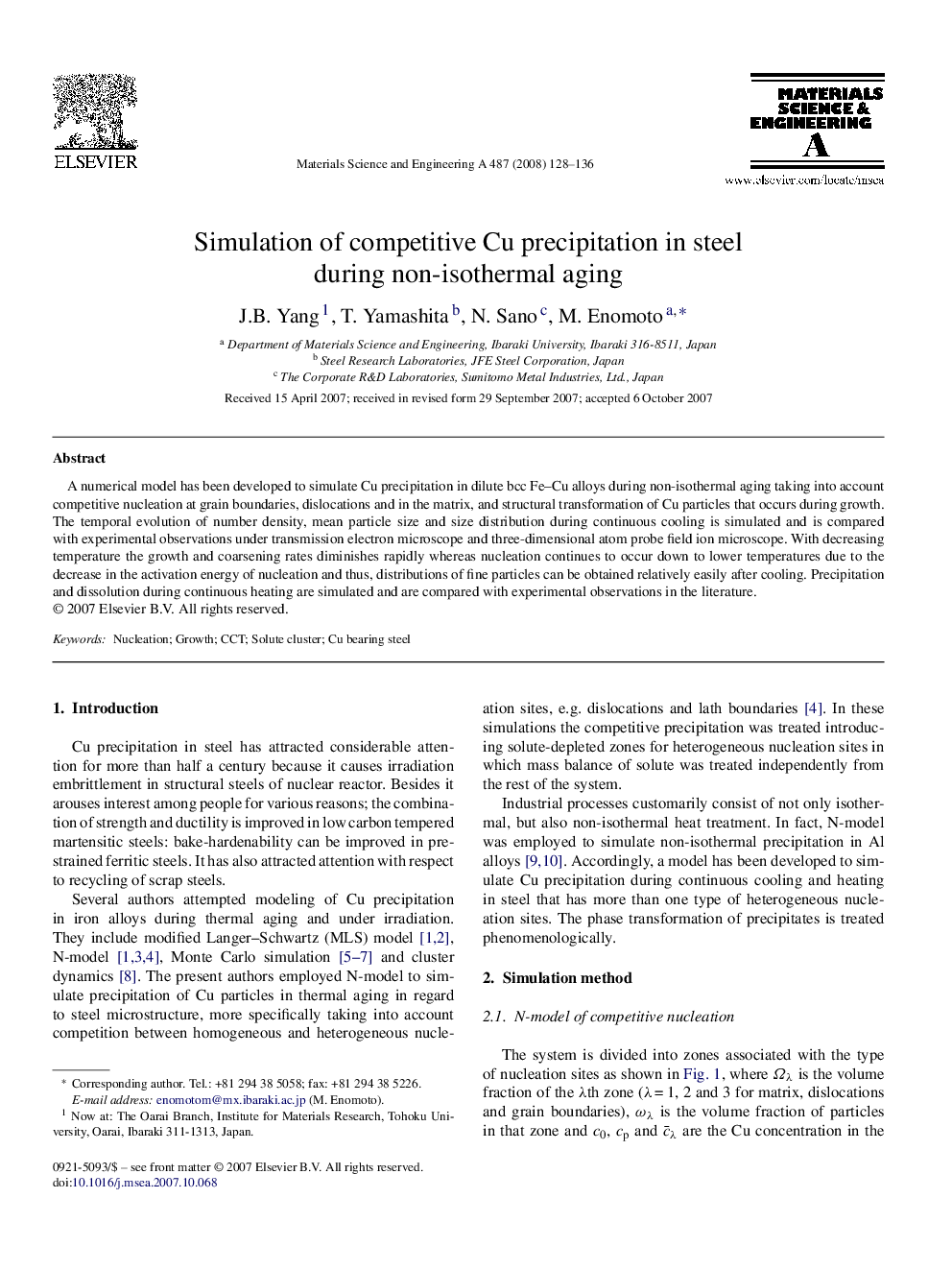| Article ID | Journal | Published Year | Pages | File Type |
|---|---|---|---|---|
| 1582553 | Materials Science and Engineering: A | 2008 | 9 Pages |
A numerical model has been developed to simulate Cu precipitation in dilute bcc Fe–Cu alloys during non-isothermal aging taking into account competitive nucleation at grain boundaries, dislocations and in the matrix, and structural transformation of Cu particles that occurs during growth. The temporal evolution of number density, mean particle size and size distribution during continuous cooling is simulated and is compared with experimental observations under transmission electron microscope and three-dimensional atom probe field ion microscope. With decreasing temperature the growth and coarsening rates diminishes rapidly whereas nucleation continues to occur down to lower temperatures due to the decrease in the activation energy of nucleation and thus, distributions of fine particles can be obtained relatively easily after cooling. Precipitation and dissolution during continuous heating are simulated and are compared with experimental observations in the literature.
